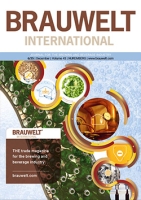Pentair Filtration Solutions has acquired Carl Prandtl MicroFiltration (CPM), a global leader in sterile air filtration. CPM brings Pentair Filtration Solutions over a century of innovation and expertise in sterile air filtration technologies in the Food and Beverage industry. . CPM also offers a line of in-process and off-line filter cartridge integrity testing equipment.
Beer filtration has seen significant developments over the last 25 years. An excellent overview, including a synopsis of the status quo and the prospects for the future for this sector, was published in the BRAUWELT anniversary edition [1]. Most systems are either new or based on further developments of existing technologies that usually require substantial investment and therefore represent a significant hurdle for small and medium-size companies. True to the motto “Never change a winning team”, Begerow uses a different approach for offering breweries environment-friendly and economic filtration solutions. Read on to find out how different breweries work with Becopad.
The so-called brightness is an important quality characteristic of beers. After extended storage, clear filtered beer eventually loses its brilliance while haze or deposits form. Consumers expect that beer does not change, at least not until the best before date. It is therefore expedient to remove haze-active substances. To reduce haze formation, use of filter aids and stabilisers prolong colloidal stability in commercial operations. In the first part of this article series, the authors describe the most important haze-forming substances in beer and known mechanisms of formation. The second part presents a practical method for identifying hazes and describes relevant test methods, illustrated by commercial examples. The problem of “haze in beer” has been a research focus at the Chair of Brewing and Beverage Technology for some years [5].
To avoid the demography-is-destiny-trap, Japanese firms are looking overseas for growth. But it’s a big leap to become a fully-fledged international player.
Demands on quality | The appearance of a beverage plays a significant role in the enjoyment of the drinking experience. With the advent of transparent, colorless glasses, clarity has become a sign of quality. The following article provides a brief overview of the development of fine, bright filtration and explores the causes for turbidity in beer and the measures employed to correct it.
In terms of sustainability, the brewing industry has passed the point of no return. After the sector has topped out, it has turned its back on conventional solutions and is moving towards clean technologies that are in keeping with the perpetual upward movement in terms of quality, sustainability and flexibility, naturally at lower cost. Experience gathered at Norit over ten years of development work in beer filtration is summarised in this article.
Some brewers are feeling morose about their future. The growing interest in special edition beers however suggests they should not.
Together with China, India with its estimated 1.23 billion population is one of the fastest growing major economies in Asia, which is currently undergoing both rapid growth and industrialisation. While most of the traditionally strong economies in the world suffered greatly under the global economic crisis, India overcame it quite easily. Today, a strong consuming class in India with disposable income has triggered the world’s attention and many international companies are looking for opportunities to establish business in India.
Due to the rising cost of energy and raw materials, the current climate debate and stricter regulations governing environmental policies, businesses are experiencing greater pressure than ever before, which is creating new challenges for internal logistics in almost all types of production plants. A structured approach can be beneficial in meeting the demands for moving towards more sustainable intralogistics. For example, the introduction of a monitoring system, able to measure sustainability parameters, supports the evaluation of steps taken for raising efficiency and therefore the utilization of potential for savings linked to their implementation.
Global players and small and medium-sized breweries have realised the savings potential offered by alternative filtration methods in terms of water consumption, disposal, inventory management etc. In addition, the disposal of traditional filter aids such as kieselguhr is currently under discussion, and the outcome of these discussions is uncertain. Begerow is responding to current and future questions regarding innovation and sustainability with its “greenomic” philosophy, while at the same time addressing economic aspects. Using three breweries as examples, this article explains the options this system offers and the associated average filtration costs compared with conventional kieselguhr filtration. The investment costs are not discussed, since they always depend on equipment that may already exist.
Detection of trace bacterial contamination in the brewery using conventional culture methods is often a long, complex process. Since bacteria multiply only very slowly under certain conditions, the time required to achieve reliable analysis results is equally lengthy (5 – 10 days). A modern method, such as real-time PCR shortens analysis times significantly (24 – 48 hours). With the foodproof Beer Screening Kit from Biotecon Diagnostics, almost all beer spoilage contaminants can be identified without any additional effort or loss of time. With this essential information, the risk management response can be improved and costs reduced dramatically.


